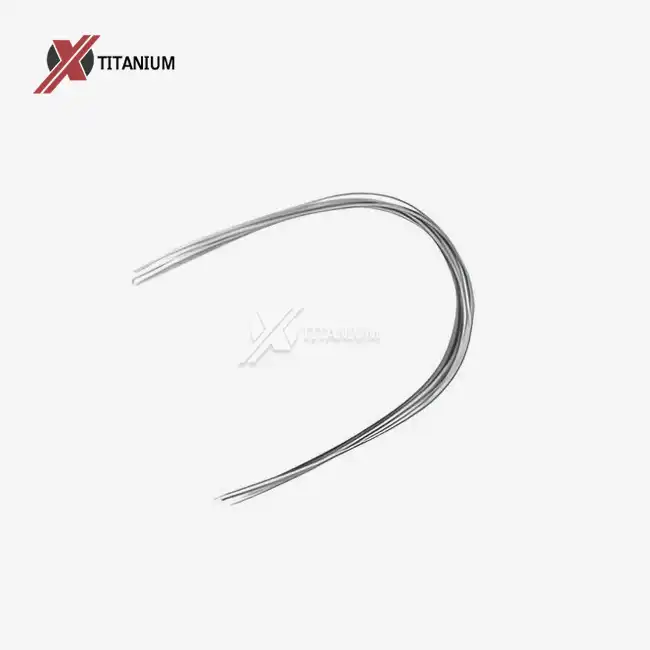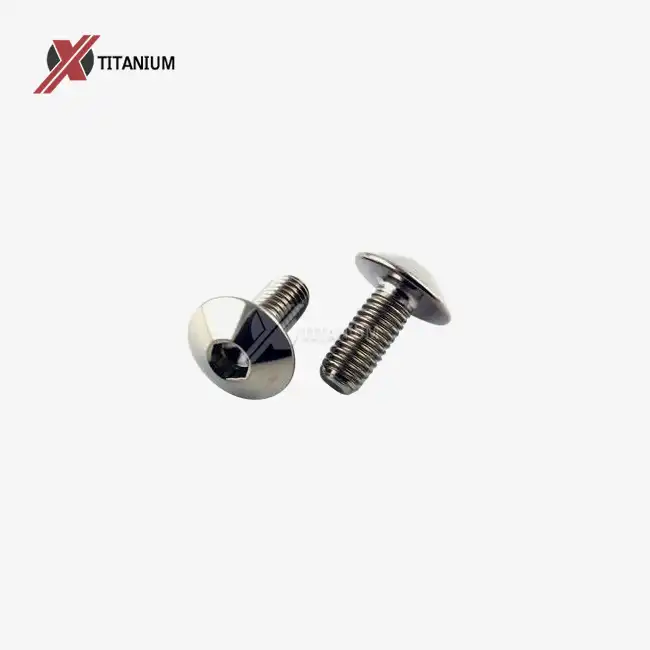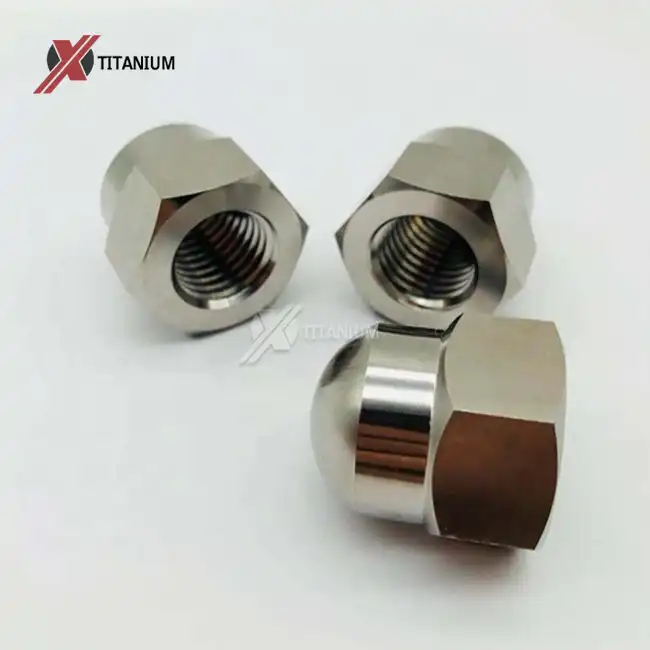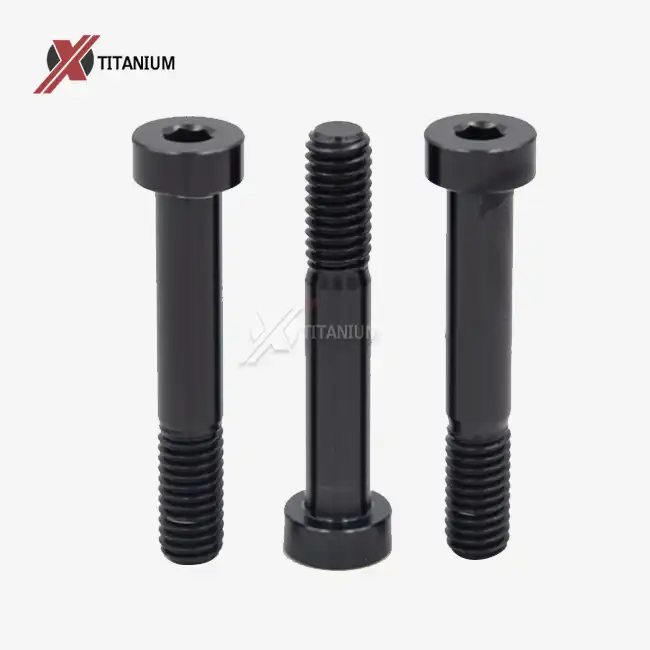Understanding Grade 2 Titanium Plate Properties
Chemical Composition and Mechanical Characteristics
Grade 2 titanium plate, also known as commercially pure titanium, boasts a unique chemical composition that contributes to its remarkable properties. This alloy contains a minimum of 99% titanium, with trace amounts of elements such as carbon, iron, oxygen, and nitrogen. The controlled inclusion of these elements results in a material that strikes an optimal balance between strength and ductility.
The mechanical characteristics of grade 2 titanium plate are equally impressive. With a tensile strength of approximately 345 MPa and a yield strength of 275 MPa, this material offers robust performance in various applications. Its elongation of 20% demonstrates excellent ductility, allowing for considerable deformation before failure. The modulus of elasticity, measuring around 110 GPa, indicates good stiffness without compromising flexibility.
Corrosion Resistance and Biocompatibility
One of the standout features of grade 2 titanium plate is its exceptional corrosion resistance. The material forms a stable, protective oxide layer when exposed to oxygen, providing a natural barrier against corrosive environments. This property makes it particularly suitable for use in marine applications, chemical processing plants, and other harsh environments where material degradation is a concern.
Furthermore, grade 2 titanium's biocompatibility has made it a staple in the medical industry. Its non-toxic nature and resistance to bodily fluids make it an ideal choice for implants, surgical instruments, and other medical devices. The material's ability to integrate with human tissue without adverse reactions has revolutionized the field of medical implantology.
Welding Techniques for Grade 2 Titanium Plate
TIG Welding: Precision and Control
TIG welding, or Tungsten Inert Gas welding, is a preferred method for joining grade 2 titanium plates. This technique offers exceptional control over the weld pool, allowing for precise and high-quality welds. When welding grade 2 titanium, it's crucial to use pure argon as a shielding gas to prevent oxidation and maintain the integrity of the weld.
The process typically involves using a non-consumable tungsten electrode to create an arc, while a separate filler rod is added as needed. Welders must pay close attention to heat input and travel speed to avoid overheating the material, which can lead to embrittlement or distortion. Proper preparation of the material, including thorough cleaning and degreasing, is essential for achieving optimal weld quality.
MIG Welding: Efficiency for Larger Projects
Metal Inert Gas (MIG) welding offers a faster alternative for joining grade 2 titanium plates, particularly in larger-scale projects. This process uses a consumable wire electrode, which is continuously fed through the welding gun. As with TIG welding, an inert gas shield (typically argon) is employed to protect the weld pool from atmospheric contamination.
MIG welding grade 2 titanium requires careful selection of welding parameters, including wire feed speed, voltage, and travel speed. The higher deposition rate of MIG welding can lead to increased heat input, so proper cooling strategies may be necessary to maintain the material's properties. Despite these challenges, MIG welding can be highly effective for large-scale fabrication of grade 2 titanium structures when performed by skilled operators.
Optimizing Weld Quality in Grade 2 Titanium Plate
Pre-Weld Preparation and Post-Weld Treatment
Achieving high-quality welds in grade 2 titanium plate begins with meticulous pre-weld preparation. This process involves thorough cleaning of the material to remove any contaminants, oils, or oxides that could compromise weld integrity. Mechanical cleaning methods, such as stainless steel wire brushing or chemical etching, are commonly employed to ensure a clean surface.
Post-weld treatment is equally crucial in maintaining the desired properties of the welded structure. Heat treatment, such as stress relief annealing, can help alleviate residual stresses introduced during the welding process. Additionally, proper post-weld cleaning and passivation can restore the corrosion-resistant oxide layer, ensuring long-term performance of the welded grade 2 titanium components.
Quality Control and Inspection Methods
Rigorous quality control measures are essential when welding grade 2 titanium plate. Visual inspection is the first line of defense, allowing for the identification of surface defects, incomplete fusion, or poor weld bead geometry. However, more advanced non-destructive testing methods are often employed to ensure weld integrity.
Radiographic testing can reveal internal defects such as porosity or inclusions, while ultrasonic testing is effective in detecting lack of fusion or cracks. For critical applications, mechanical testing of welded samples may be performed to verify the strength and ductility of the welded joint. These comprehensive inspection methods ensure that welded grade 2 titanium structures meet the stringent quality standards required in industries such as aerospace, marine engineering, and medical device manufacturing.
Conclusion
The weldability of grade 2 titanium plate is a testament to its versatility and reliability in various industrial applications. Its unique combination of strength, corrosion resistance, and biocompatibility makes it an invaluable material in sectors ranging from aerospace to medical implants. By understanding the properties of grade 2 titanium and employing appropriate welding techniques, fabricators can harness the full potential of this remarkable material. As industries continue to demand high-performance materials, grade 2 titanium plate stands out as a solution that offers both durability and ease of fabrication.
At Baoji Chuanglian New Metal Material Co., Ltd., we specialize in providing high-quality grade 2 titanium plate for all your welding needs. Our expertise in titanium products ensures that you receive materials that meet the highest industry standards. For more information or to discuss your specific requirements, please contact us at info@cltifastener.com or djy6580@aliyun.com.
FAQs
What are the key advantages of using grade 2 titanium plate for welding projects?
Grade 2 titanium plate offers excellent weldability, high corrosion resistance, and superior strength-to-weight ratio, making it ideal for various welding applications.
Can grade 2 titanium plate be welded to other metals
While possible, welding grade 2 titanium to dissimilar metals can be challenging due to differences in thermal properties and potential for intermetallic compound formation.
What are the most common welding defects encountered with grade 2 titanium plate?
Common defects include porosity, lack of fusion, and embrittlement due to oxygen contamination. Proper welding techniques and environmental controls can mitigate these issues.




